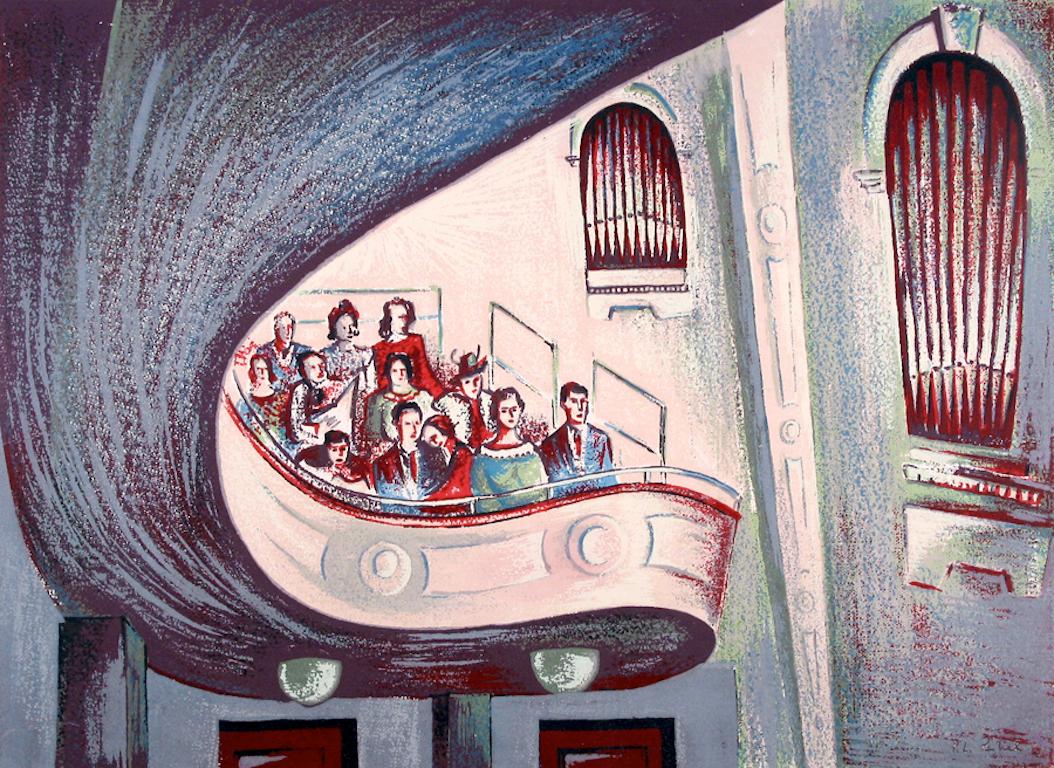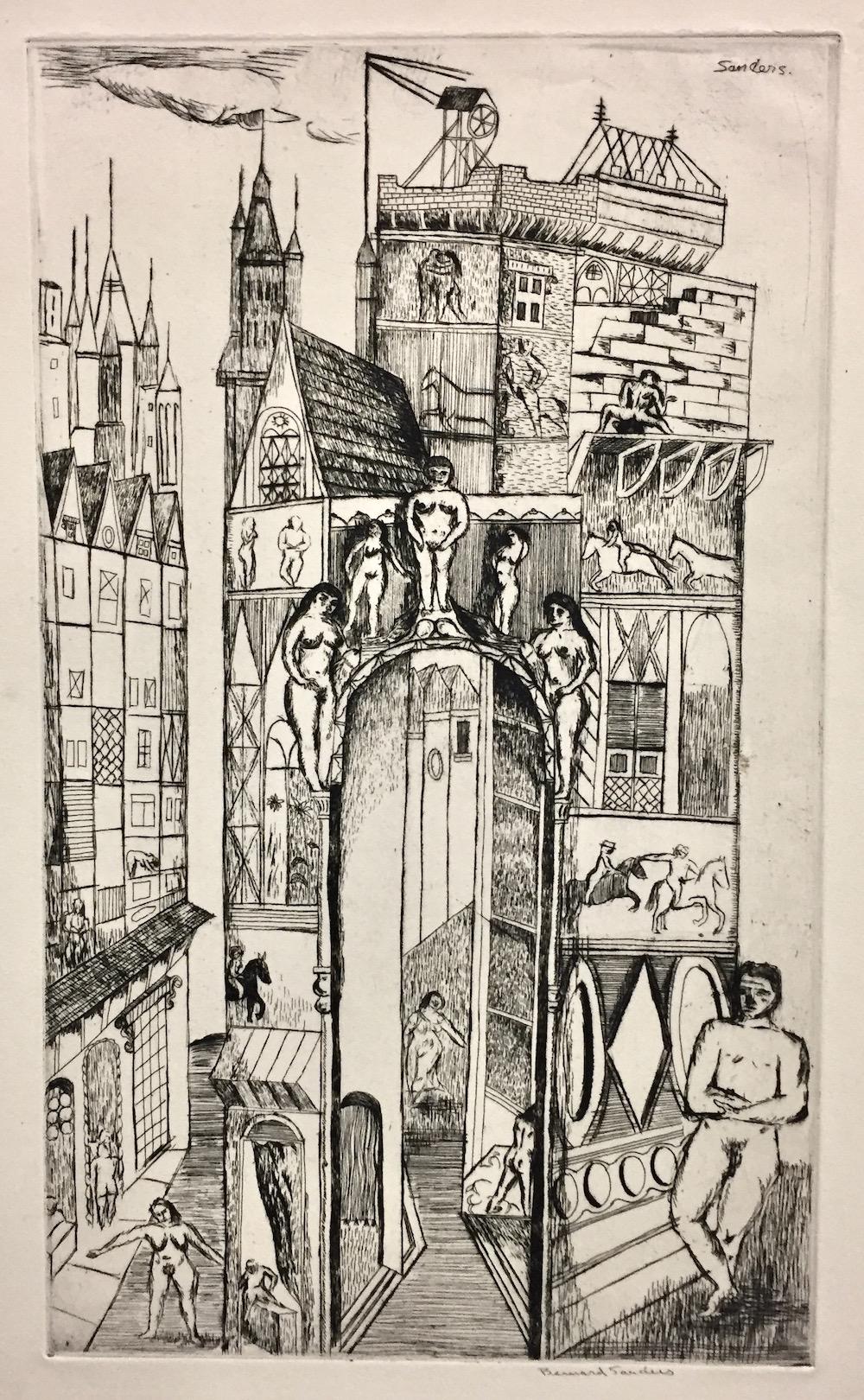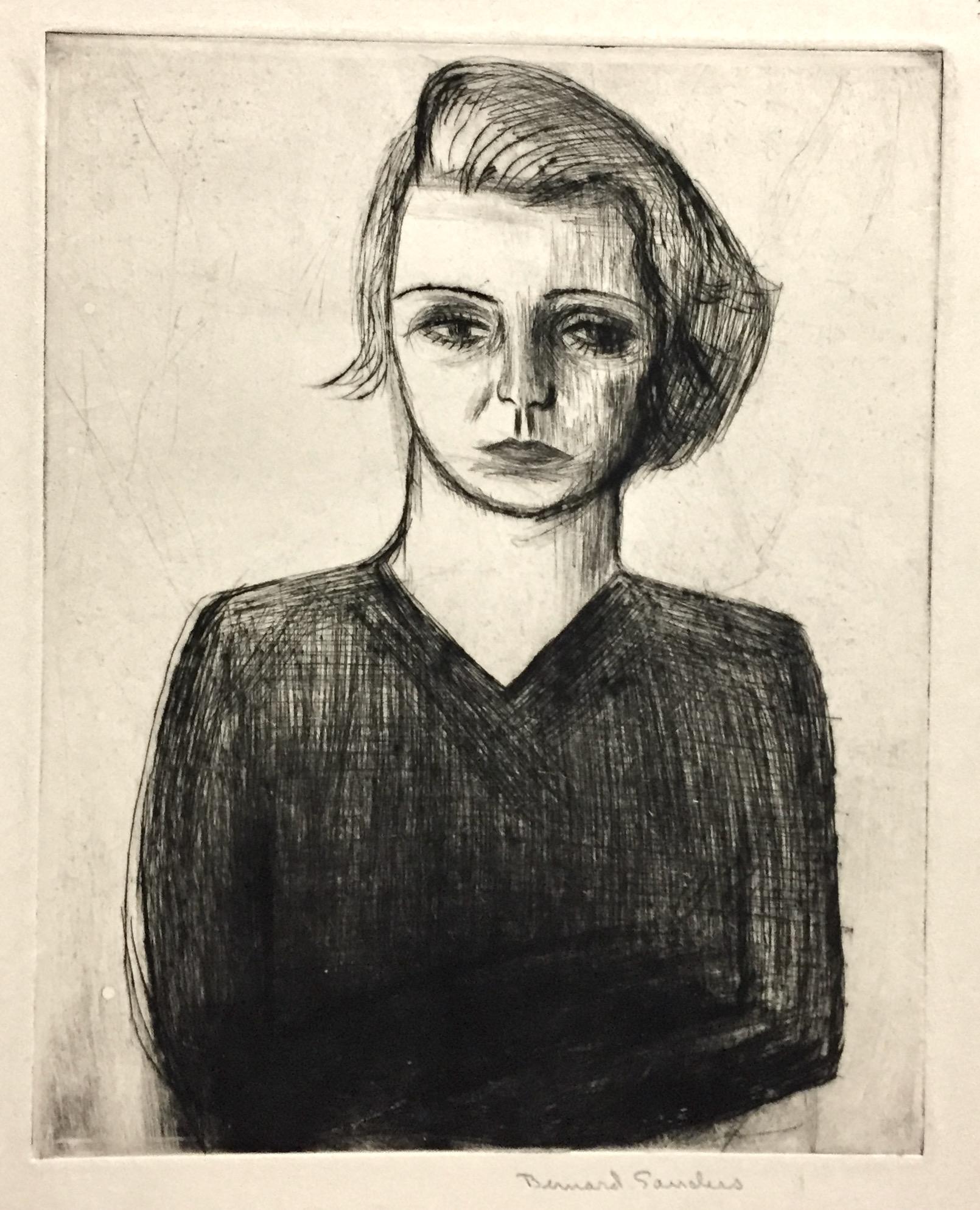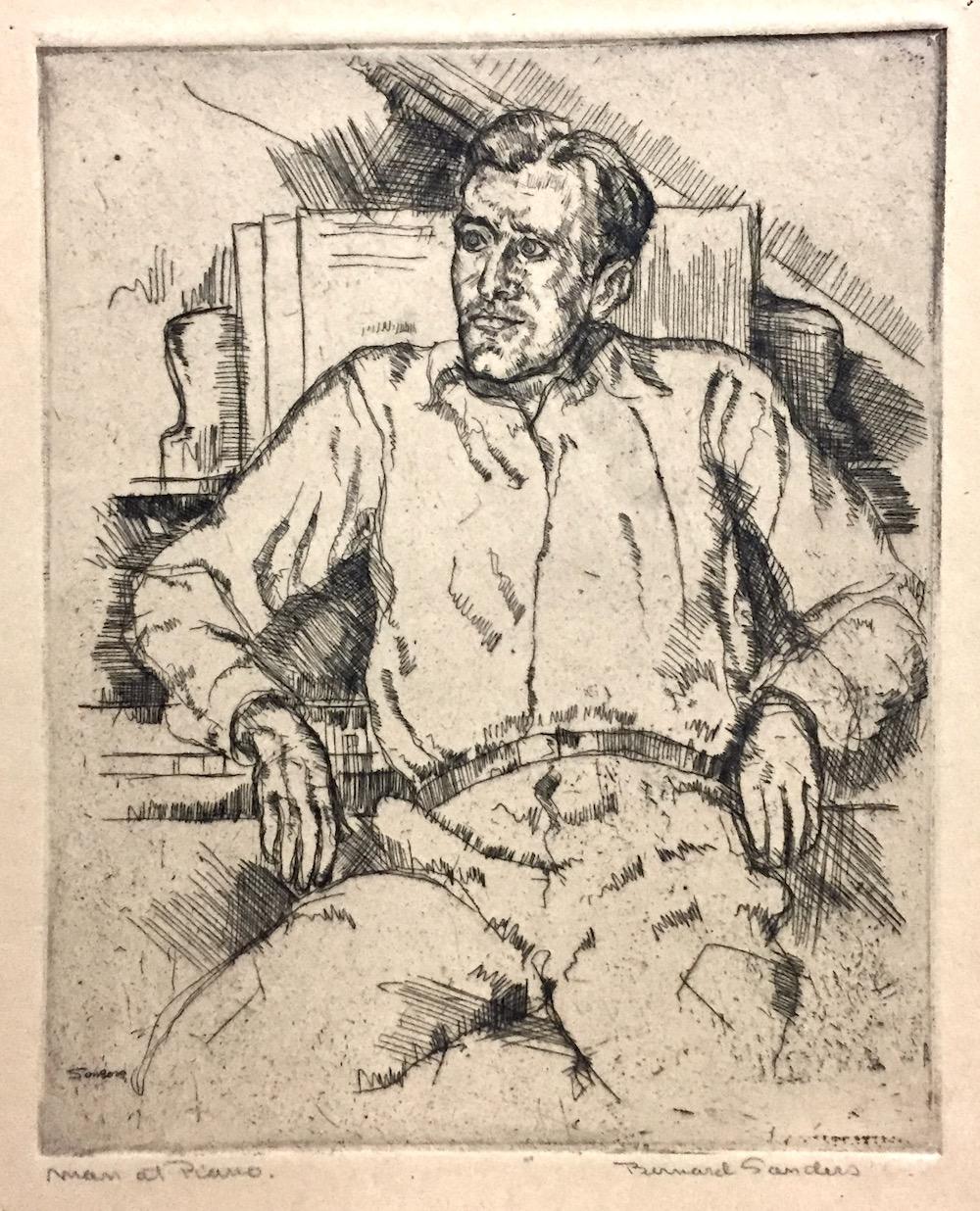Items Similar to Chris Ware New Yorker Cartoonist Limited Edition Thanksgiving Print NYC
Want more images or videos?
Request additional images or videos from the seller
1 of 12
Chris WareChris Ware New Yorker Cartoonist Limited Edition Thanksgiving Print NYC2006
2006
About the Item
This is one print – printed in full color on 15" x 20" heavy cream-colored paper.
It is from a limited edition series of 175,
the portfolio is hand numbered and hand signed by Chris Ware. the individual prints are not.
The page with the hand signature is included here as a photo for reference only it is not included in this sale.
Franklin Christenson "Chris" Ware (born December 28, 1967), is an American cartoonist known for his Acme Novelty Library series (begun 1994) and the graphic novel Jimmy Corrigan, the Smartest Kid on Earth (2000) and Building Stories (2012). His works explore themes of social isolation, emotional torment and depression. He tends to use a vivid color palette and realistic, meticulous detail. His lettering and images are often elaborate and sometimes evoke the ragtime era or another early 20th-century American design style.
Ware often refers to himself in the publicity for his work in self-effacing, even withering tones. He is considered by some critics and fellow notable illustrators and writers, such as Dave Eggers, to be among the best currently working in the medium; Canadian graphic-novelist Seth has said, "Chris really changed the playing field. After him, a lot of [cartoonists] really started to scramble and go, 'Holy [expletive], I think I have to try harder.'"
While still a sophomore at UT, Ware came to the attention of Art Spiegelman, who invited Ware to contribute to Raw, the influential anthology magazine Spiegelman was co-editing with Françoise Mouly. Ware has acknowledged that being included in Raw gave him confidence and inspired him to explore printing techniques and self-publishing. His Fantagraphics series Acme Novelty Library defied comics publishing conventions with every issue.
Ware's art reflects early 20th-century American styles of cartooning and graphic design, shifting through formats from traditional comic panels to faux advertisements and cut-out toys. Stylistic influences include advertising graphics from that same era; newspaper strip cartoonists Winsor McCay (Little Nemo in Slumberland) and Frank King (Gasoline Alley); Charles Schulz's post-WWII strip Peanuts and the cover designs of ragtime-era sheet music. Ware has spoken about finding inspiration in the work of artist Joseph Cornell and cites Richard McGuire's strip Here as a major influence on his use of non-linear narratives. He is one of the great practitioners who have elevated the graphic novel style along with, Shepard Fairey, Ben Katchor and Robert Crumb.
Quimby the Mouse was an early character for Ware and something of a breakthrough. Rendered in the style of an early animation character like Felix the Cat, Quimby the Mouse is perhaps Ware's most autobiographical character.
Ware's Building Stories was serialized in a host of different venues. It first appeared as a monthly strip in Nest Magazine. Installments later appeared in a number of publications, including The New Yorker, Kramer's Ergot, and most notably, the Sunday New York Times Magazine. Building Stories appeared weekly in the New York Times Magazine from September 18, 2005 until April 16, 2006. A full chapter was published in Acme Novelty Library, number 18. Another installment was published under the title "Touch Sensitive" as a digital app released through McSweeneys. The entire narrative was published as a boxed set of books by Pantheon in October 2012.
Ware was commissioned by Chip Kidd to design the inner machinations of the bird on the cover of Haruki Murakami's novel The Wind-Up Bird Chronicle.
In 2011, Ware created the poster for the U.S. release of the 2010 Palme d'Or winning film Uncle Boonmee Who Can Recall His Past Lives by Thai director Apichatpong Weerasethakul.
Awards and honors
Over the years his work garnered several awards, including the 1999 National Cartoonists Society's Award for Best Comic Book for Acme Novelty Library and Award for Graphic Novel for Building Stories.
Ware has won numerous Eisner Awards and multiple Harvey Awards. In 2002, Ware became the first comics artist to be invited to exhibit at Whitney Museum of American Art biennial exhibition. With Will Eisner, Jack Kirby, Harvey Kurtzman, Robert Crumb and Gary Panter, Ware was among the artists honored in the exhibition "Masters of American Comics" at the Jewish Museum in New York City, New York, from September 16, 2006 to January 28, 2007. His work was the subject of solo exhibitions at the Museum of Contemporary Art, Chicago in 2006 and at the University of Nebraska's Sheldon Museum of Art, in 2007.
Many famous artists have done covers for the New Yorker Magazine including, Saul Steinberg, Maira Kalman, Art Spiegelman, Francoise Mouly, Charles Addams, Peter Arno, Roz Chast, Ed Koren, William Steig, James Thurber and many others. This one is a fresh contemporary take on the Norman Rockwell classic.
Ware's graphic novel Jimmy Corrigan, the Smartest Kid on Earth won the 2001 Guardian First Book Award, the first time a graphic novel has won a major United Kingdom book award. It also won the prize for best album at the 2003 Angoulême International Comics Festival in France.
In 2006, Ware received a USA Hoi Fellow grant from United States Artists.
In 2013, Ware received the 2013 Lynd Ward Graphic Novel Prize for Building Stories and was finalist for Jan Michalski Prize for Literature and Los Angeles Times Book Prize.
- Creator:Chris Ware (1967)
- Creation Year:2006
- Dimensions:Height: 20 in (50.8 cm)Width: 15 in (38.1 cm)
- Movement & Style:
- Period:
- Condition:
- Gallery Location:Surfside, FL
- Reference Number:1stDibs: LU38213654502
About the Seller
4.9
Platinum Seller
These expertly vetted sellers are 1stDibs' most experienced sellers and are rated highest by our customers.
Established in 1995
1stDibs seller since 2014
1,547 sales on 1stDibs
Typical response time: 1 hour
- ShippingRetrieving quote...Ships From: Surfside, FL
- Return PolicyA return for this item may be initiated within 3 days of delivery.
More From This SellerView All
- Chris Ware New Yorker Cartoonist Limited Edition Thanksgiving Print NYCBy Chris WareLocated in Surfside, FLThis is one print – printed in full color on 15" x 20" heavy cream-colored paper. It is from a limited edition series of 175, the portfolio is hand numbered and hand signed by Chris Ware. the individual prints are not. The page with the hand signature is included here as a photo for reference only it is not included in this sale. Franklin Christenson "Chris" Ware (born December 28, 1967), is an American cartoonist known for his Acme Novelty Library series (begun 1994) and the graphic novel Jimmy Corrigan, the Smartest Kid on Earth (2000) and Building Stories (2012). His works explore themes of social isolation, emotional torment and depression. He tends to use a vivid color palette and realistic, meticulous detail. His lettering and images are often elaborate and sometimes evoke the ragtime era or another early 20th-century American design style. Ware often refers to himself in the publicity for his work in self-effacing, even withering tones. He is considered by some critics and fellow notable illustrators and writers, such as Dave Eggers, to be among the best currently working in the medium; Canadian graphic-novelist Seth has said, "Chris really changed the playing field. After him, a lot of [cartoonists] really started to scramble and go, 'Holy [expletive], I think I have to try harder.'" While still a sophomore at UT, Ware came to the attention of Art Spiegelman, who invited Ware to contribute to Raw, the influential anthology magazine Spiegelman was co-editing with Françoise Mouly. Ware has acknowledged that being included in Raw gave him confidence and inspired him to explore printing techniques and self-publishing. His Fantagraphics series Acme Novelty Library defied comics publishing conventions with every issue. Ware's art reflects early 20th-century American styles of cartooning and graphic design, shifting through formats from traditional comic panels to faux advertisements and cut-out toys. Stylistic influences include advertising graphics from that same era; newspaper strip cartoonists Winsor McCay (Little Nemo in Slumberland) and Frank King (Gasoline Alley); Charles Schulz's post-WWII strip Peanuts and the cover designs of ragtime-era sheet music. Ware has spoken about finding inspiration in the work of artist Joseph Cornell and cites Richard McGuire's strip Here as a major influence on his use of non-linear narratives. He is one of the great practitioners who have elevated the graphic novel style along with, Shepard Fairey, Ben Katchor and Robert Crumb. Quimby the Mouse was an early character for Ware and something of a breakthrough. Rendered in the style of an early animation character like Felix the Cat, Quimby the Mouse is perhaps Ware's most autobiographical character. Ware's Building Stories was serialized in a host of different venues. It first appeared as a monthly strip in Nest Magazine. Installments later appeared in a number of publications, including The New Yorker, Kramer's Ergot, and most notably, the Sunday New York Times Magazine. Building Stories appeared weekly in the New York Times Magazine from September 18, 2005 until April 16, 2006. A full chapter was published in Acme Novelty Library, number 18. Another installment was published under the title "Touch Sensitive" as a digital app released through McSweeneys. The entire narrative was published as a boxed set of books by Pantheon in October 2012. Ware was commissioned by Chip Kidd to design the inner machinations of the bird on the cover of Haruki Murakami's novel The Wind-Up Bird Chronicle. In 2011, Ware created the poster for the U.S. release of the 2010 Palme d'Or winning film Uncle Boonmee Who Can Recall His Past Lives by Thai director Apichatpong Weerasethakul. Awards and honors Over the years his work garnered several awards, including the 1999 National Cartoonists Society's Award for Best Comic Book for Acme Novelty Library and Award for Graphic Novel for Building Stories. Ware has won numerous Eisner Awards and multiple Harvey Awards. In 2002, Ware became the first comics artist to be invited to exhibit at Whitney Museum of American Art biennial exhibition. With Will Eisner, Jack Kirby, Harvey Kurtzman, Robert Crumb and Gary Panter, Ware was among the artists honored in the exhibition "Masters of American Comics" at the Jewish Museum in New York City, New York, from September 16, 2006 to January 28, 2007. His work was the subject of solo exhibitions at the Museum of Contemporary Art, Chicago in 2006 and at the University of Nebraska's Sheldon Museum of Art, in 2007. Many famous artists have done covers for the New Yorker Magazine including, Saul Steinberg, Maira Kalman, Art Spiegelman, Francoise Mouly, Charles Addams, Peter Arno, Roz Chast, Ed Koren...Category
Early 2000s American Modern Figurative Prints
MaterialsColor
- Chris Ware New Yorker Cartoonist Limited Edition Thanksgiving Print NYCBy Chris WareLocated in Surfside, FLThis is one print – printed in full color on 15" x 20" heavy cream-colored paper. It is from a limited edition series of 175, the portfolio is hand numbered and hand signed by Chris Ware. the individual prints are not. The page with the hand signature is included here as a photo for reference only it is not included in this sale. Franklin Christenson "Chris" Ware (born December 28, 1967), is an American cartoonist known for his Acme Novelty Library series (begun 1994) and the graphic novel Jimmy Corrigan, the Smartest Kid on Earth (2000) and Building Stories (2012). His works explore themes of social isolation, emotional torment and depression. He tends to use a vivid color palette and realistic, meticulous detail. His lettering and images are often elaborate and sometimes evoke the ragtime era or another early 20th-century American design style. Ware often refers to himself in the publicity for his work in self-effacing, even withering tones. He is considered by some critics and fellow notable illustrators and writers, such as Dave Eggers, to be among the best currently working in the medium; Canadian graphic-novelist Seth has said, "Chris really changed the playing field. After him, a lot of [cartoonists] really started to scramble and go, 'Holy [expletive], I think I have to try harder.'" While still a sophomore at UT, Ware came to the attention of Art Spiegelman, who invited Ware to contribute to Raw, the influential anthology magazine Spiegelman was co-editing with Françoise Mouly. Ware has acknowledged that being included in Raw gave him confidence and inspired him to explore printing techniques and self-publishing. His Fantagraphics series Acme Novelty Library defied comics publishing conventions with every issue. Ware's art reflects early 20th-century American styles of cartooning and graphic design, shifting through formats from traditional comic panels to faux advertisements and cut-out toys. Stylistic influences include advertising graphics from that same era; newspaper strip cartoonists Winsor McCay (Little Nemo in Slumberland) and Frank King (Gasoline Alley); Charles Schulz's post-WWII strip Peanuts and the cover designs of ragtime-era sheet music. Ware has spoken about finding inspiration in the work of artist Joseph Cornell and cites Richard McGuire's strip Here as a major influence on his use of non-linear narratives. He is one of the great practitioners who have elevated the graphic novel style along with, Shepard Fairey, Ben Katchor and Robert Crumb. Quimby the Mouse was an early character for Ware and something of a breakthrough. Rendered in the style of an early animation character like Felix the Cat, Quimby the Mouse is perhaps Ware's most autobiographical character. Ware's Building Stories was serialized in a host of different venues. It first appeared as a monthly strip in Nest Magazine. Installments later appeared in a number of publications, including The New Yorker, Kramer's Ergot, and most notably, the Sunday New York Times Magazine. Building Stories appeared weekly in the New York Times Magazine from September 18, 2005 until April 16, 2006. A full chapter was published in Acme Novelty Library, number 18. Another installment was published under the title "Touch Sensitive" as a digital app released through McSweeneys. The entire narrative was published as a boxed set of books by Pantheon in October 2012. Ware was commissioned by Chip Kidd to design the inner machinations of the bird on the cover of Haruki Murakami's novel The Wind-Up Bird Chronicle. In 2011, Ware created the poster for the U.S. release of the 2010 Palme d'Or winning film Uncle Boonmee Who Can Recall His Past Lives by Thai director Apichatpong Weerasethakul. Awards and honors Over the years his work garnered several awards, including the 1999 National Cartoonists Society's Award for Best Comic Book for Acme Novelty Library and Award for Graphic Novel for Building Stories. Ware has won numerous Eisner Awards and multiple Harvey Awards. In 2002, Ware became the first comics artist to be invited to exhibit at Whitney Museum of American Art biennial exhibition. With Will Eisner, Jack Kirby, Harvey Kurtzman, Robert Crumb and Gary Panter, Ware was among the artists honored in the exhibition "Masters of American Comics" at the Jewish Museum in New York City, New York, from September 16, 2006 to January 28, 2007. His work was the subject of solo exhibitions at the Museum of Contemporary Art, Chicago in 2006 and at the University of Nebraska's Sheldon Museum of Art, in 2007. Many famous artists have done covers for the New Yorker Magazine including, Saul Steinberg, Maira Kalman, Art Spiegelman, Francoise Mouly, Charles Addams, Peter Arno, Roz Chast, Ed Koren...Category
Early 2000s American Modern Figurative Prints
MaterialsColor
- Israeli Jerusalem Judaica Sephardic Rabbi, Boy, Torah Art Drawing Bezalel SchoolBy Jossi SternLocated in Surfside, FLVibrant lithograph by Israeli master JOSSI STERN. on paper mounted to board. Sefardic Rabbi studying with son Torah. 23 x 21 framed 13.5 x 19.5 Hungary, b. 1923, d. 1992 Jossi (Yossi) Stern, son of David and Katerina, was born in the Bakon Hills of Hungary, in 1923. He was already drawing when at the age of ten he moved with his family from the Bakon Hill region to the considerably more cosmopolitan Budapest. Recognizing the looming threat of Hitler and the pending Nazi invasion of Hungary, in 1940, at the age of seventeen, the young artist made his way to Palestine aboard the Sakaria, an old ship heavily crowded with 2,300 other refugees. Before reaching the shores of Palestine, then under the British Mandate, the British Navy intercepted the ship and declared Stern and all those aboard illegal immigrants. Stern was sent to a prison camp where he remained incarcerated by the British for six months. In 1943, having spent a few years doing agricultural work, Stern was encouraged by close friends who recognized his artistic talent to enroll in the prestigious Bezalel School of the Arts in Jerusalem. An outstanding student, he eventually became a highly respected teacher of Graphic Arts at Bezalel. Stern is recognized in Israel as having been one of the country's premier artists. His drawings are exhibited and appear in many publications and museums worldwide. Stern was the recipient of numerous awards including the Jerusalem Medal as well as both the UNESCO and Herzl Prize. He was included in the exhibition New Bezalel Artists' House, Jerusalem Tel Aviv Museum, along with Artists: Ludwig Wolpert, Joseph Budko, Gershon Knispel, Gershon Avigdor Arikha, Maryan, Jacob Steinhardt, Ruth Schloss...Category
20th Century Modern Figurative Prints
MaterialsLithograph
- Vintage Russian Ukrainian Soldiers in Forest Scene Judaica Lithograph Jewish ArtBy Anatoli Lvovich KaplanLocated in Surfside, FLPencil signed and dated, Russian Soviet Judaica Lithograph. Anatoli Lwowitch Kaplan was a Russian painter, sculptor and printmaker, whose works often reflect his Jewish origins. His...Category
Mid-20th Century Modern Figurative Prints
MaterialsLithograph
- Machpela Cave Chevron 1969 Israeli Judaica Lithograph Baruch Nachshon Chabad ArtBy Baruch NachshonLocated in Surfside, FLBaruch Nachshon, was born in Mandatory Palestine in 1939, in the city of Haifa. Nachshon began to paint in early childhood, and developed his relationship to art and to artists throu...Category
1960s Modern Interior Prints
MaterialsLithograph
- Vintage Russian Ukrainian Shtetl Scene Judaica Lithograph Jewish PortraitBy Anatoli Lvovich KaplanLocated in Surfside, FLPencil signed and dated, Judaica Lithograph. Anatoli Lwowitch Kaplan was a Russian painter, sculptor and printmaker, whose works often reflect his Jewish origins. His father was a b...Category
Mid-20th Century Modern Figurative Prints
MaterialsLithograph
You May Also Like
- "Balcony" 1938 WPA Print Mid 20th Century American Broadway Theatre ModernismBy Leon BibelLocated in New York, NY"Balcony" 1938 WPA Print Mid 20th Century American Broadway Theatre Modernism. Silk screen on paper, 15” x 20". Numbered 15/20 lower left. Pencil si...Category
1930s American Modern Figurative Prints
MaterialsPaper, Screen
- (Four Women at Hat Store)Located in New York, NYThis is such an interesting image. Are there 'Four women'? Is the head on the upper right from a hat store or is she another person in the scene. And what a...Category
Mid-20th Century American Modern Figurative Prints
MaterialsEtching
- Bernard Sanders, (Fantastic City)Located in New York, NYThis extravagant subject is a clear exception in the oeuvre of Bernard Sanders. Signed in pencil; interestingly signed in the plate at the upper right ...Category
Early 20th Century American Modern Interior Prints
MaterialsEtching
- Bernard Sanders, (Interior with Five Men)Located in New York, NYThe always fashionable Bernard sanders draws a mysterious spaces with well-dressed gentlemen. Signed in pencil.Category
Early 20th Century American Modern Figurative Prints
MaterialsDrypoint
- Bernard Sanders, Man at PianoLocated in New York, NYFor a print that's nearly one hundred years old it feels very contemporary. Signed and titled in pencil. Besides the etching I think there is some false biting that adds tone here.Category
Early 20th Century American Modern Interior Prints
MaterialsEtching
- Bernard Sanders, Head of GirlLocated in New York, NYFor a print that's nearly one hundred years old it feels very contemporary. Signed in pencil; titled in lower margin in pencil.Category
Early 20th Century American Modern Interior Prints
MaterialsDrypoint
Recently Viewed
View AllMore Ways To Browse
Michel Delacroix La Sortie Du Chenil Lithograph
Salvador Dali Horseman
The First Heaven Paradise Canto 3 Salvador Dali
Shepard Fairey Signed Poster
Textile Exhibition Poster
Complete Bedroom Set Value
50 Banquet Plates
Charles Gallen
Giovanni Fontana 1795
Tipp Co
Picasso Cubist Prints
19th Century Lithograph Of Woman
Couple Embrace Love
Degas Monotype
Calder Style Framed
Henry Link French
Peter Max Statue
Voltaire Book





